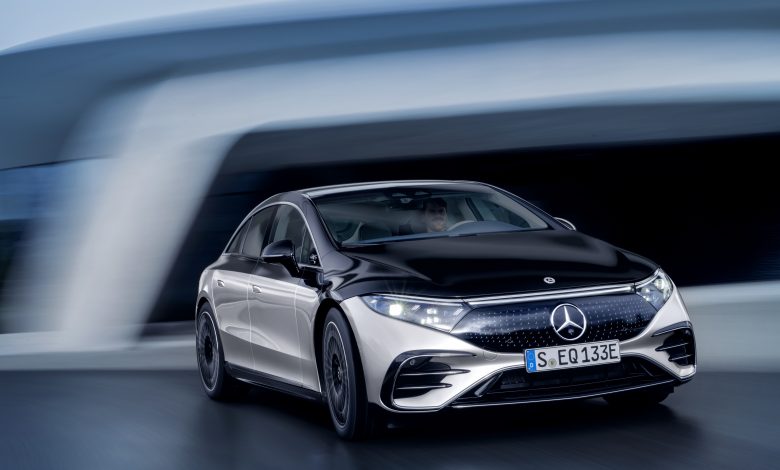
We have seen electric hyper-cars (Rimac), electric SUV’s, electric pick-up trucks (Hummer EV), affordable EV’s and then we’ve had the Tesla Model S. But, the EV’s were always missing in one key segment. Luxury vehicles. Mercedes have finally satisfied that need with nothing other than an electric version of their infamous flagship sedan, the S-class. Welcome everyone, the Mercedes Benz EQS.

The Mercedes EQS screams luxury from every possible angle. The shape, design, alloy wheels, side mirrors and even its door handles speak volumes about its luxury and build. To put it simply, any of the Tesla vehicles do not possess even 25% of the fit, finish and feel of the EQS. That is not an exaggeration. While the interiors of a Tesla speak minimalism, the build quality of their cars give a clear indication of their production ‘issues’.
But again, comparing the EQS with a Model S would be like comparing an S-class with a Skoda Superb. There is no doubt that the Superb is a brilliant car, it just does not stand anywhere near the S-class. Let’s now take a deeper dive into the EQS.

According to Mercedes, “The EQS is the first all-electric luxury saloon from Mercedes-EQ. With it, Mercedes-EQ is redefining this vehicle segment. The EQS is also the first model to be based on the modular architecture for luxury and executive-class electric vehicles. Fusing technology, design, functionality and connectivity, the EQS delights both drivers and passengers. First models on the market will be the EQS 450+ with 245 kW and the EQS 580 4MATIC with 385 kW.”
Exterior design
Before you say it, I could hear some noises. This one does not look as good as the S-class. And honestly, even the new S-class does not look as special as it used to. The aura that an S-class used to create because of it’s aesthetics was lost in a rather bland looking (Audi A8 like) design. Fortunately, the EQS is not bland by any means. Unfortunately, Mercedes have overdone it a bit.
Now, have no doubts that the car looks and feels like a roller through and through. I can already see celebrities getting out of that HUGE rear door. Moreover, Mercedes EQ have done a brilliant job to make it look like it is from the future. It’s just that Mercedes EQ’s design philosophies are a bit different from Mercedes in order to (you guessed it) differentiate themselves as a different brand. This in turn leads to experiments with a design that always used to age well. With the EQS though, it seems it will wear out too soon even if it is meant to represent the future.
Mercedes says that “highest demands on function and aerodynamics are combined with innovative aesthetics in the unmistakable purpose design. Sensual Purity is reflected in generously modelled surfaces, reduced joints and seamless transitions.” When translated in English, they mean that aerodynamics and function have been the priority while designing this car. There are seamless transitions between body panels having as little panel gaps as possible to give it a smooth airflow because that would be very necessary. Seamless design is realized with reduced lines, precise joints and flowing transitions because aerodynamics and formal aesthetics go hand in hand!

The aerodynamic silhouette with frameless, coupé-like doors and the high, arched beltline are independent design elements in the profile. The exterior mirrors sit on the beltline and are aerodynamically and aero-acoustically optimized in order to give the passengers an almost dead-silence driving experience. Chrome accents highlight design focal points like the one-bow line of the window graphics. High-quality paint has been used for contrasting surfaces in the lower area of the vehicle. “Because they are Germans and it is impossible for them to paint a car badly.”

Flush door handles are standard on all models. A panoramic sunroof is available as an option. It consists of two modules that together form a large glass surface providing what I’m guessing is a lot of transparency and light in the interior. The service flap for wiper fluid was integrated into the side of the left wing. An interesting fact to note is that the bonnet can only be opened by the specialist workshop for maintenance work, such as replacing the interior air filter. This means there is no boot space in the front or as the Americans say it, “frunk.”

As you can see, the A-pillar has been moved far forward to generate space for a generous passenger compartment between the A-pillar and the C-pillar. Unique in this segment is the cab-forward design: the overhangs and the front-end assembly are short, the rear is smoothly rounded off. The flush-positioned wheels measuring just under 75 cm in size range from 19 to 22 inches.
The front is combined into a ‘Black Panel’ unit. The sporty, low and slim front of the EQS forms a coupé-like silhouette with a bow stretched tightly over the greenhouse. Innovative headlights connected by a light band and the deep black radiator grille (Black Panel) form the distinctive face. This makes the EQS the model for a new luxury-class generation from Mercedes-EQ. Three light dots, combined with the characteristic Mercedes eyebrow, form the striking daytime running light signet. LED High Performance headlamps are standard, DIGITAL LIGHT is available as an optional extra.

Coming over to the rear, which is my favorite part, there is a rear spoiler with a sharp spoiler lip. The flush tailgate has been integrated almost seamlessly with precise gaps. The rear camera is hidden behind the three pointed star, protected from dirt. The highlight at the rear are those new LED lamps: Their insides have the shape of a curved and illuminated 3D helix. As at the front, the EQS also has a continuous light band at the rear – a distinguishing feature of Mercedes-EQ vehicles.

Interiors
The inside is where all the magic is. And I don’t even mean it as a joke! The technology that has been integrated into this car is nothing short of 21st century magic. Also meaning that the maintenance costs will be approximately equal to the price of a VW Polo. But hey, the buyers at this segment have to look for places to spend money at so who cares?

Mercedes say that “With this completely new type of vehicle, the designers had the mission and the opportunity to take a completely new approach to the interior design as well. They made use of this freedom and, in addition to the MBUX Hyperscreen, relied on consistent digitization for many other elements.” And they sure did a 5-star job for the 3 pointed star.
The optional MBUX Hyperscreen impressively implements this vision: the entire instrument panel is one ultra-widescreen. This determines the aesthetics of the entire cockpit lounge and the interior. The real glass appears to drape itself in three dimensions over the entire width of the vehicle like a wave – a unique feature in automotive construction to date.


The high-resolution screens merge under the shared glass cover. The graphic appearance of their MBUX content is tailored to each other. The MBUX Hyperscreen is integrated into the instrument panel in a rather minimalist fashion. The outcome though, is the exact opposite of minimalism. It is opulence at a level I have only ever imagined.
The MBUX Hyperscreen is surrounded only by a thin silver shadow frame, a vent band and a narrow leather frame, reminiscent of the lower volume body of classic instrument panels. The vent band spans across the entire width at the top and is very slim at the same time. These extreme proportions, together with the glass wave of the MBUX Hyperscreen, create the avant-garde architecture of the cockpit.



The dominant outer vents have a turbine design. They deliberately play on the theme of hyperanalogue through the contrast between high-tech precision mechanics and digital, glass display world. The intricately designed turbine blades carry over the traditional Mercedes design. The front section of the center console joins the instrument panel and stands freely in space. It is a visual reference to the new drive architecture – due to the electric powertrain, no transmission tunnel is necessary.


The rear seats are typical of an S-class. Enough legroom to outclass a luxury liner Boeing and enough tech to put even Tesla at notice. The base model without MBUX Hyperscreen has a slightly different centre console. There is a soft armrest in the rear section. It is first visually interrupted before being transitioned into the floating central display.

The design of the door panels borrows from the interior design of modern living spaces. Doors and their centre panels emerge from behind the MBUX Hyperscreen to span the space. A surface-mounted modular body floats like a sideboard in front of the door panel. It accommodates all necessary door elements such as armrest, door module, pull handle and map pocket. Circular ambient lighting completes this floating, avant-garde aesthetic in the dark.


The drivetrain
With ranges up to 770 kilometres (WLTP) and an output of up to 385 kW the powertrain of the EQS can be referred to as a progressive saloon in the S-Class segment. A performance version with up to 560 kW is also being planned. All EQS models have an electric powertrain (eATS) at the rear axle, while the versions with 4MATIC also have an eATS at the front axle.

The EQS marks the launch of a new generation of batteries with significantly higher energy density. The larger of the two batteries has a usable energy content of 107.8 kWh. That is around 26 percent more than the EQC (EQC 400 4MATIC). The innovative battery management software, developed in-house, allows updates over the air (OTA). In this way, the energy management system remains up to date throughout the life cycle. In terms of the cell chemistry, the cobalt content of the cathodes has been reduced to ten percent.
The EQS can be charged with up to 200 kW at fast charging stations with direct current. Power for up to another 300 kilometres (WLTP) is recharged in just 15 minutes. At home or at public charging stations, the EQS can be conveniently charged with up to 22 kW with AC using the on-board charger. In Japan, bidirectional charging with the EQS will also be possible, i.e. charging in both directions. In addition, there are various intelligent charging programs that can be activated automatically depending on the location, and functions such as particularly battery-saving charging.

By means of high-quality certificates of origin, Mercedes-Benz guarantee that energy from renewable energy sources is fed into the grid for charging current sourced via Mercedes me Charge. This so-called Green Charging has been an integral part of Mercedes me Charge since 2021. But Mercedes me Charge can do even more: drive to the appropriate charging station, open the flap, plug in and the current starts flowing: this is how easy the charging process is with the EQS, thanks to Plug & Charge. Told you it was magic!

Other highlights include the highest density network of charging points, with more than 500,000 of them in 31 countries, including over 200,000 in Europe. With IONITY Unlimited, all European Mercedes me Charge customers can use the fast charging network free of charge for one year.
Mercedes have been thinking hard about the environment too it seems. As part of its Ambition 2039 initiative, Mercedes-Benz is working on offering a carbon-neutral new car fleet within 20 years from now. By as early as 2030, the company wants more than half the cars it sells to feature electric drive systems – this includes fully electric vehicles and plug-in hybrids.
Moreover, the vehicles are produced in a carbon-neutral manner, and resource-saving materials such as carpets made from recycled yarn are used. This is because Mercedes-Benz considers the entire value chain, from development and the supplier network to its own production. Mercedes-Benz AG has had its climate protection targets confirmed by the Science Based Targets Initiative (SBTI).

The EQS starts at around £80,000. But, you would have to spend somewhere around £100,000 if you fancy a more powerful 4-wheel-drive EQS. That is a bit of a premium over the S-class but considering this is an EV, I’d say this is very well priced. For India though, this would cost significantly more so expect it to come at around INR 3 crores when launched in India late this year or in Q1 of 2022. So, what do you think of this new EQS? Let us know in the comments below.

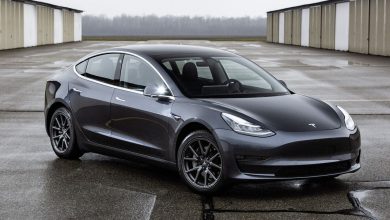
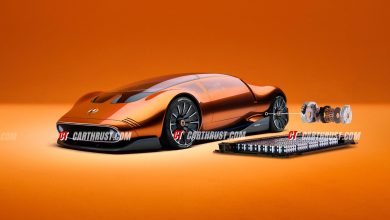
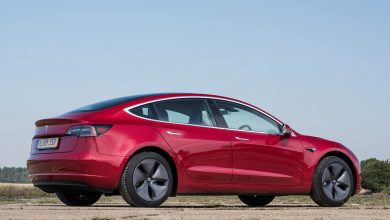
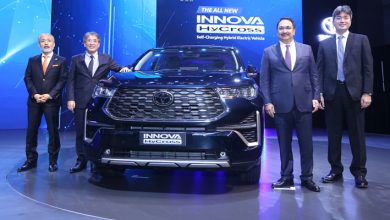
2 Comments